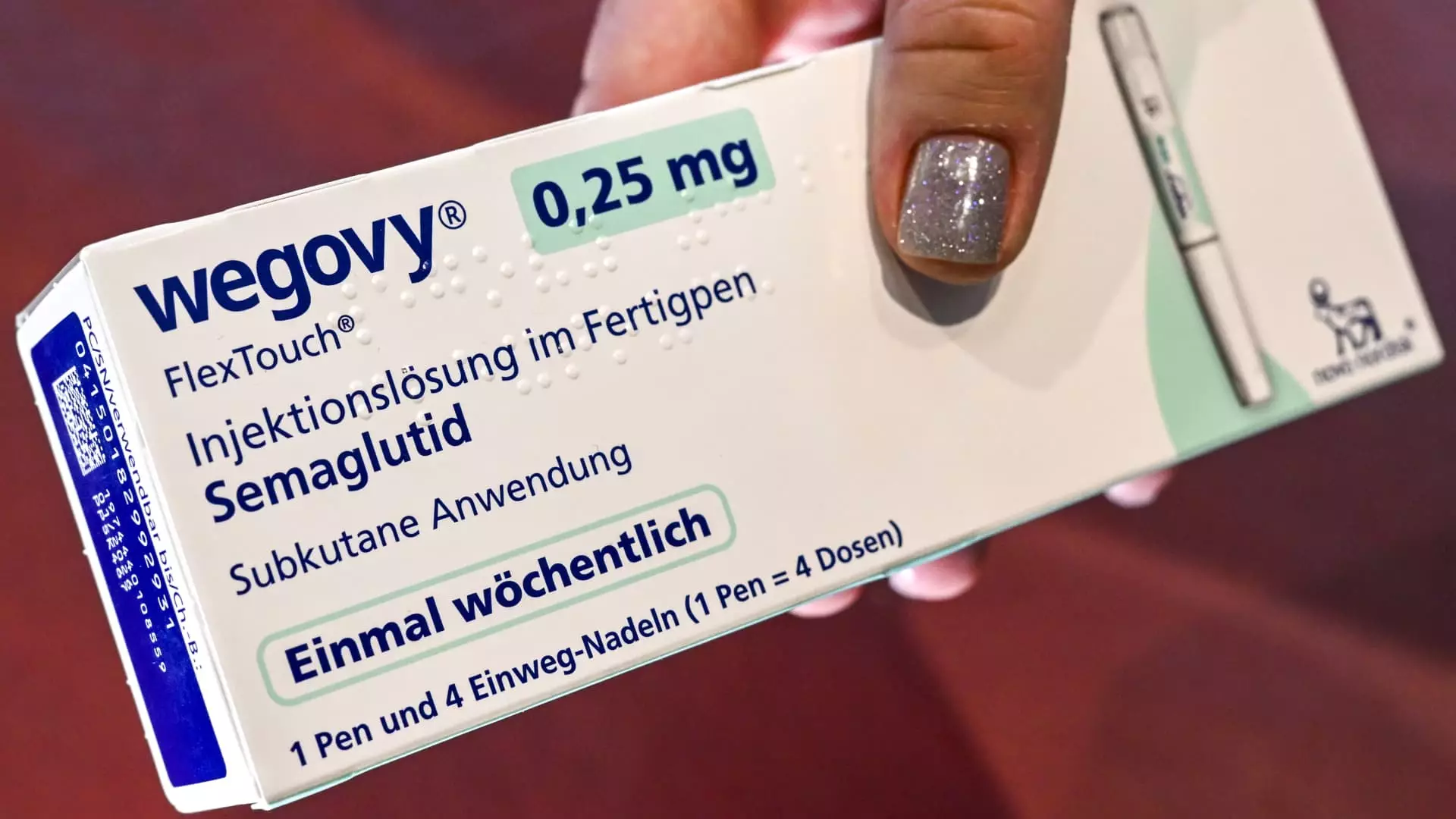In an era where the digital transformation of healthcare is at its peak, Novo Nordisk’s recent announcement regarding the weight loss medication Wegovy and its collaboration with telehealth companies represents a significant shift in medical access and patient care. With shares surging for both Novo Nordisk and Hims & Hers Health following this move, the implications of telehealth in managing obesity are worth scrutinizing. Here, we delve into five essential insights that illustrate the consequences of this strategic partnership and the greater landscape of pharmaceutical accessibility.
Democratizing Access to Life-Changing Medication
Novo Nordisk’s decision to partner with telehealth platforms—a move aimed at expanding the availability of Wegovy—has the potential to democratize access to a medication that can significantly change the lives of those struggling with obesity. Historically, weight loss treatments have often been hard to come by, either due to supply shortages or bureaucratic red tape. However, with Wegovy now widely available, patients can obtain their prescriptions conveniently through platforms like Hims & Hers, Ro, and LifeMD without having to navigate an array of in-person healthcare settings.
This shift cannot be understated; obesity is a complex condition that affects more than just physical health. The psychological toll it takes on individuals can be profound, making the rapid access to effective treatment a crucial element in medical care. It’s imperative that we recognize how telehealth reduces barriers—not only geographic ones but also social ones—providing an avenue for patients who may feel stigmatized or overwhelmed in traditional healthcare settings.
Cost Considerations and Healthcare Inequity
While Novo Nordisk’s Wegovy is now more accessible through telehealth providers, the price point remains a significant barrier for many. The offered cash price of $499—though competitive compared to historical costs—can still be prohibitive for those without insurance coverage. It raises an important question about the equity of healthcare access. In a society that prides itself on inclusivity, how can we justify a system where effective treatments remain out of reach for a substantial portion of the population?
Telehealth providers are also pricing their services differently, with Hims & Hers offering packages that start at $599, inclusive of additional support services while Ro positions itself at a lower price point of $499. The variability in pricing, influenced by added services such as nutritional guidance and 24/7 care, reflects a broader trend in healthcare where value is determined as much by preservation of wealth as by efficacy of treatment. This scenario begs for regulatory oversight aimed at ensuring that life-saving medications like Wegovy don’t become exclusive commodities available only to the affluent.
The Role of Compounding Pharmacies and Regulatory Landscape
The legal restrictions placed on compounding pharmacies during the Wegovy shortage highlighted the complexities of drug regulations. Compounding pharmacies, which can personalize medications in response to specific patient needs, were vital for many patients during the period of scarcity. However, with the re-entry of Novo Nordisk’s FDA-approved product into the market, the economy of treatment is at a pivotal juncture.
As larger compounding pharmacies now face impending deadlines to cease production of unapproved versions of semaglutide, and with smaller pharmacies still allowed to operate under strict guidelines, this tug-of-war between innovation and regulation raises concern. The future landscape of drug availability should lean towards promoting safety and efficacy, but it must also be informed by patient-centric models. The dialogue surrounding compounding practices reveals the healthcare system’s ongoing struggle between accessibility and safety, highlighting the need for balancing consumer rights with public health considerations.
The Digital Health Revolution: Does Quality Suffer?
The incorporation of telehealth services into the model for dispensation of Wegovy undoubtedly marks a pivotal moment in digital health. Nevertheless, it’s essential to examine whether this rush towards digital solutions might compromise the quality of care provided. While the convenience of obtaining a prescription online is indisputable, it raises questions about patient engagement and physician oversight.
Telehealth advocates stress the ease of access, yet one must ponder whether these platforms can deliver the same quality of care found in traditional settings. Hims & Hers promises personalized support through their body program, yet the quality of this care is contingent on effective communication and patient diligence—factors not easily measured in an online consultation. For far too long, the healthcare system has cultivated an environment where quantity is prioritized over quality.
Novo Nordisk’s collaboration with telehealth providers marks a significant milestone in accessible medical care, especially for those battling obesity. However, the potential cost burdens and dialogue surrounding compounding pharmacies warrant careful consideration. The integration of telehealth into the pharmaceutical landscape holds promise, but also challenges, particularly in ensuring equitable access, patient safety, and quality of care. The commitment to transparency regarding pricing, alongside ongoing advocacy for social responsibility in healthcare, remains essential for fostering a system that honors both innovation and patient welfare.

